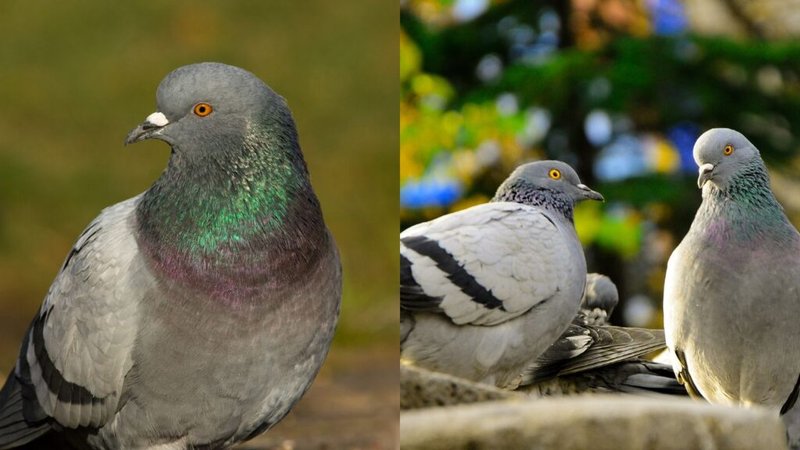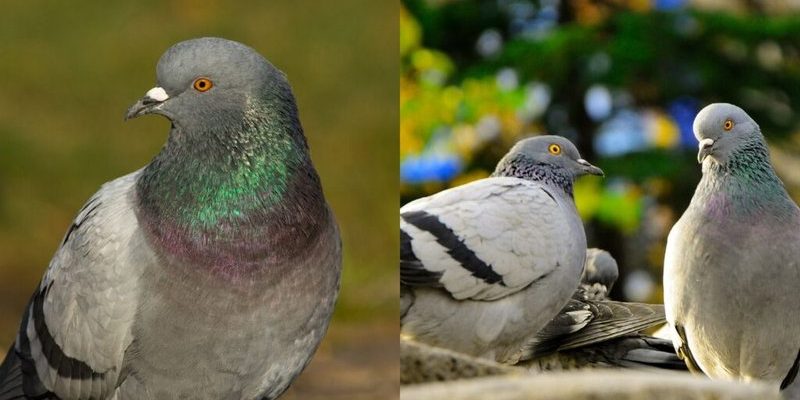
Picture this: you’re sipping your morning coffee and see a pigeon on the ledge outside. You might think, “That’s just another rock pigeon.” But hold on—what if it’s a mourning dove or a feral pigeon? Being able to spot the differences can turn your casual birdwatching into a fun and educational experience. Let me explain the key differences that set the rock pigeon apart from its close relatives—because knowing your birds isn’t just for the avid birders; it’s for anyone who loves a little nature in their life.
What is a Rock Pigeon?
The rock pigeon, also known as the Rock Dove, is a common sight in urban areas. These birds are known for their stocky build and distinctive coloring. Typically, they have grayish bodies with two black wing bars and a slightly iridescent neck. You can often spot them sitting on city ledges or pecking at crumbs on the ground.
One interesting thing about rock pigeons is their adaptability. They can thrive in cities, parks, and agricultural areas. They were originally wild birds found in Europe and Asia, but they have successfully expanded their range globally. So the next time you see one, keep in mind they have quite the history!
Rock pigeons are also known for their homing ability. This unique trait means they can find their way home from long distances, which has made them popular for racing and as pets throughout history. It’s a fascinating example of how nature can be both resilient and useful.
Physical Characteristics
Now, let’s dive into what makes rock pigeons stand out physically. When you look closely at a rock pigeon, you’ll likely see a few key features:
- Color: Typically gray, but they can vary from white to brown or even black.
- Size: They usually measure around 12 to 14 inches in length.
- Beak: They have a short, thin beak that’s perfect for pecking at seeds and grains.
Understanding these traits helps you tell them apart from other similar birds like mourning doves and feral pigeons. For instance, mourning doves are generally smaller, with a more slender build and long, pointed tails. Their soft, cooing sounds are also quite different from the rock pigeon’s distinct calls.
When you spot a bird in your neighborhood, take a moment to appreciate its unique features. You might even start noticing things you hadn’t before, like the different shades of feathers or the way they move.
Behavior and Habitat
Like many other birds, rock pigeons have specific behaviors and preferred habitats. They prefer to live in open areas where they can find food and stay safe from predators. You’ll often see them in urban parks, rooftops, and even at busy city intersections, where they’ve learned to scavenge for scraps.
In terms of behavior, rock pigeons are known for being quite social. They often gather in flocks, which makes it easier for them to find food and alert each other to danger. If you’ve ever watched a group of pigeons take off in unison, you know how stunning their coordinated flight can be.
One thing to keep in mind is that rock pigeons are *not* shy. You can often get pretty close to them without them flying away. This is partly due to their domestication and adaptation to living alongside humans. While their relatives might be more skittish, rock pigeons have learned that humans might drop a bit of popcorn or bread now and then!
Rock Pigeon vs. Feral Pigeon
You might be wondering, “Isn’t a feral pigeon just another name for a rock pigeon?” Great question! The terms can be confusing, but here’s the scoop: feral pigeons are actually descendants of rock pigeons that have adapted to living in the wild after being domesticated.
Feral pigeons often look similar to rock pigeons, but they tend to have a wider variation in color and size because of their mixed breeding. Some may have mottled feathers or wild color patterns that make them stand out even more.
In terms of behavior, feral pigeons are often more cautious around humans. They might hang around urban areas but will usually keep their distance compared to rock pigeons, which are more bold and accustomed to close encounters with people.
So, while they share a common ancestor, the feral pigeon has taken a different path. The next time you see a pigeon in the park, take a moment to observe. Is it acting more timid, or does it seem unfazed by your presence? This can be a quick clue to its identity!
Mourning Doves: The Slimmer Cousin
Another bird that often confuses folks is the mourning dove. These birds are much more slender than rock pigeons and have a unique, soft cooing call. Their feathers tend to be a warm, brownish color with a slight hint of pink, which can make them really beautiful to spot in the sunlight.
Mourning doves prefer open fields and woodland edges, making them a little harder to find in busy urban environments. However, they do venture into suburban areas, especially where bird feeders are plentiful. If you’re an avid birdwatcher, try putting out some seeds in your backyard to attract these lovely creatures!
While they might share habitats with rock pigeons, mourning doves are usually solitary or found in smaller groups. Watching their gentle movements can be very calming—kind of like watching a slow dance unfold in nature.
The Role of Rock Pigeons in the Ecosystem
Every bird plays a part in its environment, and rock pigeons are no exception. They serve as both prey and scavengers, keeping urban ecosystems balanced. Their feeding habits help clean up waste by consuming leftover food scraps from human activity. This means they play an essential role in reducing waste and recycling nutrients back into the environment.
Additionally, rock pigeons are part of the food chain. Birds of prey, like hawks and falcons, may hunt them, making them a key player in maintaining the balance of local wildlife populations. Understanding this connection highlights how even the most common city birds contribute to our ecosystems.
When you see a flock of rock pigeons, you’re witnessing a complex web of interactions that goes beyond just pretty feathers. It’s a reminder that every creature, no matter how small or seemingly ordinary, plays a role in our world.
Next time you’re out and about, take a moment to appreciate the rock pigeons and their feathered friends. Knowing the differences between the rock pigeon and similar bird species can deepen your connection to the natural world. It’s all about recognizing the little things that make each bird unique.
Whether you’re sitting in the park or enjoying a walk in your neighborhood, keep your eyes peeled. You might just spot a rock pigeon strutting its stuff, a mourning dove quietly foraging, or a feral pigeon with a splash of color. Each one tells a story, and they all contribute to the beautiful tapestry of urban wildlife.
So, the next time you hear that familiar coo or catch sight of a pigeon taking flight, remember: there’s a lot more going on than meets the eye. Happy birdwatching!

